
This parent guide supports parents in helping their child at home with the 8th grade Science content.
- Subject:
- Science
- Material Type:
- Reference Material
- Vocabulary
- Author:
- Kelly Rawlston
- Letoria Lewis
- Date Added:
- 10/11/2022

This parent guide supports parents in helping their child at home with the 8th grade Science content.

This resource accompanies our Rethink 8th Grade Science course. It includes ideas for use, ways to support exceptional children, ways to extend learning, digital resources and tools, tips for supporting English Language Learners and students with visual and hearing impairments. There are also ideas for offline learning.
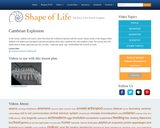
Students will watch a short film about the Cambrian Explosion and the extraordinary fossils of the Burgess Shale. Students will address preconceptions and misconceptions about early Cambrian life, and complete a timeline activity that will enable them to better appreciate just how recently - relatively speaking - multicellular life evolved on Earth.

In this STEM lesson, students use the engineering design process to build and test a model coring drill capable of penetrating several sediment layers respresented by different colors of clay/dough. Then they will use their drill to explore the sediment beds at 4-6 "sites."

In this lesson, students watch a video of scientists finding, collecting, and dating fossils. They then answer questions about scientific processes and work with ratios and proportions to solve simple algebraic equations relating to fossil data. Recommended for middle school life/earch science, high school environmental science, or high school biology.

Students learn how fossils provide important clues to past life.

This film traces the uncovering of key clues that led to the stunning discovery that an asteroid struck the Earth 66 million years ago, triggering a mass extinction of animals, plants, and even microorganisms. Each act illustrates the nature and power of the scientific method. Representing a rare instance in which many different disciplines (geology, physics, biology, chemistry, paleontology) contributed to a revolutionary theory, the film is intended for students in all science classes. Supporting materials are provided.
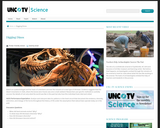
This multimedia resource, part of the NC Science Now series, describes how a paleontologist and her team of volunteers have uncovered the remains of a new type of dinosaur. Evidence suggests that the desert mountains in Utah, where the bones were found, was once a lush wetland. Researchers use specific methods to carefully uncover the details of not only what the world was like in the past but also how this individual lives, died, and rotted. Components of this resource include a video and a related blog article. Links to these components are provided on the page under the heading "UNC-TV Media."

In this activity, students will "dig" for paper fossils and make observations of various fossils to determine characteristics of chimpanzees and humans. Students will then use their new knowledge to dig up and analyze a new fossil discovery that must be presented, with evidence, to the scientific community (class) during and oral presentation.
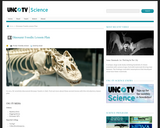
In this lesson, students explain how fossils provide important evidence of how life and environmental conditions have changed.

This worksheet supports the HHMI short film The Day the Mesozoic Died. As students watch the film, they will write down the evidence that led to the discovery that an asteroid struck Earth about 66 million years ago, causing a mass extinction. Through this exercise students gain an appreciation for the scientific process, which consists of asking questions, making observations, formulating hypotheses, and gathering and evaluating evidence.

Students date fossils from one site by matching them to fossils already dated somewhere else. They use real data from Mangahouanga, made famous by paleontologist Joan Wiffen.
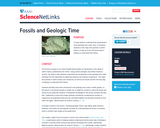
Students read the online booklet "Fossils, Rocks, and Time" which provides an introduction to the study of earth's history and the role fossils play in helping us understand this history.
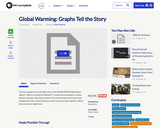
This set of graphs from the Web site for the NOVA/FRONTLINE Special Report: "What's Up with the Weather?" reveals how atmospheric carbon dioxide, methane, and nitrous oxides from the burning of fossil fuels have climbed over time. The graphs show data collected during the study of ice core samples and are featured in the article "Stories in the Ice." Supplemental resources, including a background essay and discussion questions, are also provided.

Students explore transitional forms with features of both fish and tetrapods, and see the progression of anatomical changes from reconstructed fossil skeletons in this interactive.
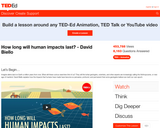
This brief video lesson discusses how the impacts that humans have made have become so pervasive, profound, and permanent that some geologists believe we merit our own epoch. Discussion/assessment questions and suggested supplemental resources are also included.
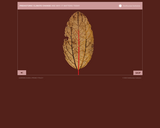
This interactive resource guides students through the process used in comparing leaf fossils to learn about the climate on Earth millions of years ago. Some mathematical calculations are involved.
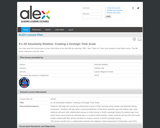
Students order the events of their morning using relative and absolute dating techniques. Students will also write a personal definition of the terms absolute age and relative age. Next, students will work with collaborative groups to order events in Earth's geologic history by relative age, then order those same events by absolute age in a scaled model timeline. Lastly, students will use the time-scale model created with their group members to analyze events in Earth's geologic history.

Students are introduced to "down-hole logging," a technology used to gather information about seafloor sediments and underwater rock layers. The student pages include sample data logs which students will read and analyze to answer questions about the data.
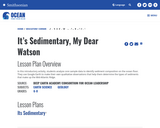
Students will analyze core sample data to identify sediment composition on the ocean floor. During this process they will map localities using latitude and longitude, locate and access core sample images from Google Earth to make their own qualitative observations, and analyze then plot sediment data. Class members then combine their findings to gain a better understanding of the types of sediments on the ocean floor.